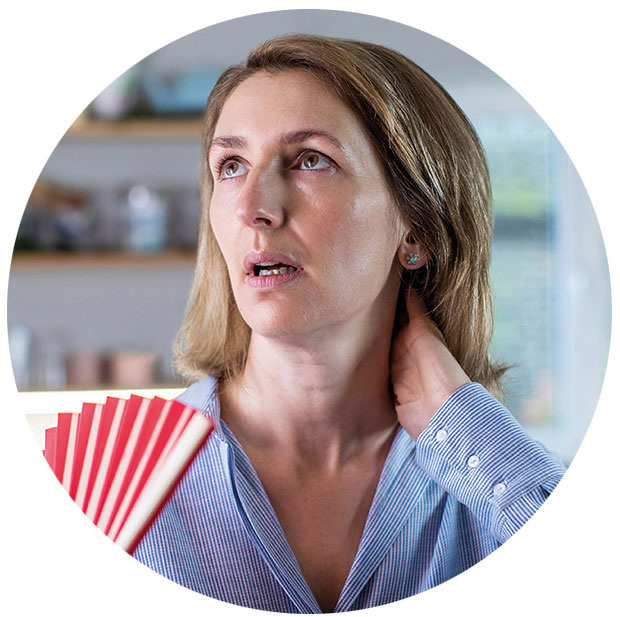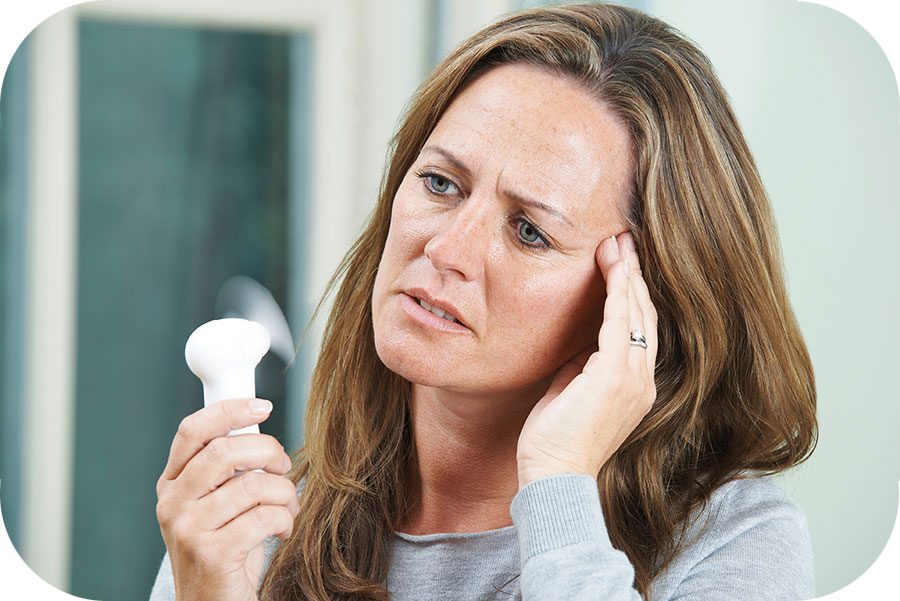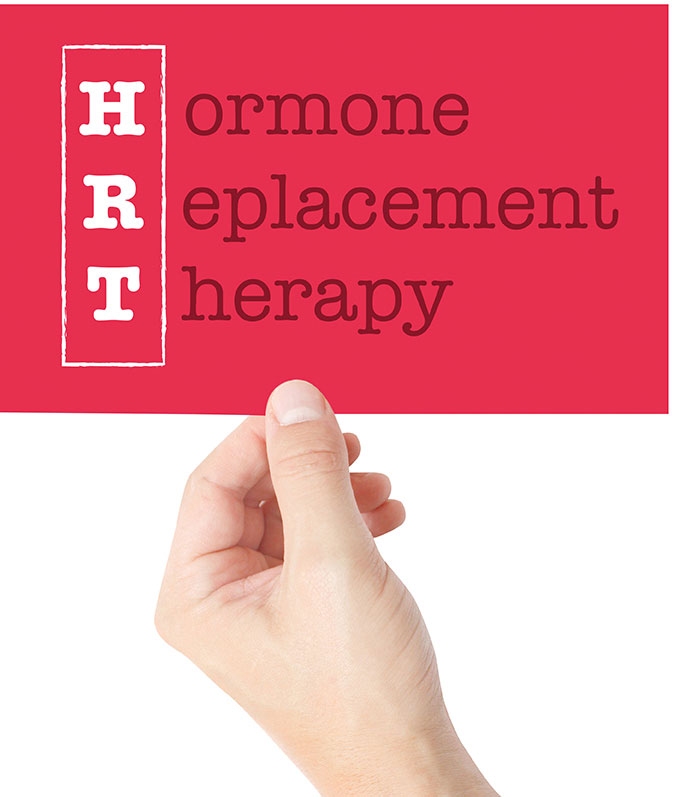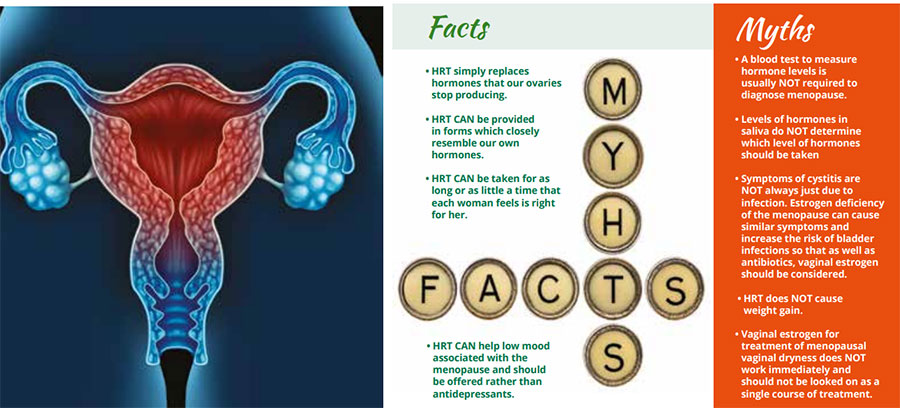Menopause Matters Magazine
HRT, keep it simple and keep it safe
Hormone Replacement Therapy (HRT) is recommended to be considered first line to treat menopausal symptoms such as flushes, sweats, low mood, anxiety, and joint aches, to name just a few common symptoms, which can cause significant distress and affect quality of life. It can also provide long-term benefits for bone and heart health, particularly in those women who are at increased risk, such as women experiencing an early menopause (before the age of 45), or premature ovarian insufficiency.
While no type of HRT is perfect, it can provide more benefits than risks for most women who take it for troublesome menopausal symptoms under the age of 60, or within ten years of the menopause.
A key point, before exploring different aspects of HRT, is that there should be a reason to take it.
Current recommended indications are:
- Treatment of troublesome menopausal symptoms
- Early menopause or premature ovarian insufficiency, unless there is a contraindication to using HRT, eg history of hormone dependant cancer
- Treatment or prevention of osteoporosis in women at risk
There is not enough evidence currently available to take HRT for presumed later benefit such as reduction of heart disease or dementia, in women at the "normal" menopausal age who do not have troublesome menopausal symptoms. However, healthy diet and lifestyle is important for all at this stage, for later health benefits.
If the main menopausal symptoms are related to vaginal dryness, irritation, discomfort or bladder symptoms, vaginal estrogen is more likely to help rather than HRT; vaginal estrogen is concentrated in the vagina and bladder and is minimally absorbed around the body. HRT is "systemic" where the hormones taken circulate around the body.
Who is it for?
Since we are all different in terms of types, severity, impact and duration of symptoms, as well as medical and family history, our need for, and response to HRT varies hugely. The variation exists not only between women, but also for each woman as she experiences the transition from premenopausal, to perimenopausal and then postmenopausal years, as not only her body and hormonal levels change, but so does life with differing situations, demands, stresses, and hence needs.
With so much to consider, it is not surprising that not all women require to take HRT, some are advised not to take HRT and, for those that choose to, there is not one type of HRT that suits all and not one that is "best".
There are some basic principles to follow, which often leads to a preparation that works without further changes being needed. However, some women may require some adjustments to their regimen before finding the one that best suits them.
Firstly, estrogen!
Estrogen is the main part of HRT since the symptoms and consequences of menopause are due to our ovaries producing less estrogen as our egg cells become depleted in number and quality. Therefore, the aim of HRT is to replace estrogen.
Tips
Dose:
in most situations, start with a low dose. There is no need to take more than is required and too high a dose is more likely to cause side effects without necessarily any extra benefit.
- Titrate the dose against symptom control; how you feel. It is rarely necessary to need blood tests to measure estrogen levels
- Be realistic about what HRT can help; it is not a magic bullet
- Any type of HRT should ideally be tried for at least 3 months before deciding whether a change is needed
- Before increasing the dose, consider if there may be other factors which are contributing to how you feel and could be addressed such as diet, smoking, alcohol, caffeine, lack of exercise, life stresses rather than increasing the dose
- Could adding in non-hormonal options such as Cognitive Behaviour Therapy (CBT) be worthwhile? CBT has been shown to reduce menopausal symptoms such as flushes, sweats, sleep disturbance, low mood and anxiety
» https://www.womens-health-concern.org/wp-content/uploads/2023/02/02-WHC-FACTSHEET-CBT-WOMEN-FEB-2023-A.pdf
 Route
Route
tablet form of estrogen is easy, convenient and provides many benefits. If you have medical problems such as an increased risk of deep vein thrombosis, (eg past history, strong family history or being overweight), high blood pressure, heart disease or migraine, transdermal estrogen (patch, gel or spray) may be recommended.
- If using a patch, best absorption is believed to be from the buttocks.
- If the patch is not staying on well, or causing skin irritation, then a different brand may help, or consider gel or spray
Progestogen
If the womb is still present, progestogen is needed along with estrogen to prevent estrogen stimulating the womb lining and eventually becoming unhealthy. The duration of progestogen is determined by whether your periods have stopped or not. If you still have a period pattern, progestogen is taken for 12 to 14 days per 28 day cycle to "recreate" a monthly cycle and so brings on a monthly bleed. This is known as sequential, or cyclical HRT.
If periods have stopped, you can take a "period-free" or "continuous combined" regimen where progestogen is taken every day along with the estrogen. Progestogen can also be provided by a progestogen releasing coil, which is effective for this role for 5 years, and can be used alongside any type of estrogen.
If you have had a hysterectomy so that the womb was removed, then usually you can take estrogen only HRT. In some situations of hysterectomy, (widespread endometriosis, or sub-total where the cervix is still present), consideration may be needed around the use of progestogen in addition.
 Key points on combined regimens
Key points on combined regimens
Regimens are simpler if progestogen is combined with the estrogen, eg a combined daily tablet or patch providing both estrogen and progestogen.
With any combined regimen, irregular bleeding is common in the first 3 to 6 months.
With continuous combined regimens, this only needs to be investigated if it is very heavy, persists beyond 6 months or occurs again at a later date. Continuous combined HRT taken in tablet form tends to cause less bleeding than if taken by patch, or as separate regimens.
Some regimens involve taking estrogen and progestogen separately. While this may be needed sometimes, it is then more complicated and care must be taken to ensure that both hormones are taken correctly, with more likelihood of bleeding.
If there is a need to increase estrogen above a medium dose, after considering other contributory factors and non-hormonal options, consideration should be given to increasing the progestogen as well.

Duration
For many women, HRT may not be needed for a long duration, since symptoms do resolve at some point for most women. Unfortunately, for each woman there is no way of predicting when symptoms will stop or, even if symptoms are still present, what impact they will have. When HRT is taken for control of menopausal symptoms, it is worth stopping at a time chosen by yourself, to see if it is still required for symptom control
Why stop?
HRT provides many benefits when used appropriately for a clear reason: symptom control, premature or early menopause, or for treatment or prevention of osteoporosis in women at risk. However, it is not completely without risk, being associated with a small increased risk of breast cancer in particular, which is duration dependent. While estrogen only HRT is believed to be associated with little or no increased risk of breast cancer, all combined HRT preparations providing both estrogen and progestogen are associated with a small increase. Some evidence suggests that some types of progestogen are of lower risk than others, but the evidence is weak and no regimen can be considered as being completely "safe".
For each woman, it is important to balance benefits against risks. When troublesome symptoms persist beyond the age of 60, the benefits are likely to continue to outweigh risks. The only way of knowing that it is still needed for symptom control, is to have a trial off HRT, knowing that it can be restarted if required.
Tips on stopping HRT
- Try to stay off HRT for at least 3 months before deciding whether to stay off or restart
- If taking a high dose preparation, then first try at least 3 months on a lower dose before stopping
- Don't try to wean off by taking every other day; irregular use may lead to bleeding problems
- If symptoms return, consider if they are as bad as before, what impact are they having, are there non hormonal options that can help at this stage?
- If you choose to restart HRT, discuss the dose, type and route. You may not need the same as you took before. While tablet HRT may suit many, after age 60 with an age related increase in deep vein thrombosis risk, estrogen should be taken through the skin, at the lowest dose which helps, and with appropriate progestogen.
In summary
- Not all women need HRT, don't feel pressurised to take it
- Ideally address any diet and lifestyle issues which may be contributing to symptoms and which can affect later health; easier said than done but important to try
- If you do take HRT, discuss dose, route, need for progestogen and which regimen
- When use appropriately for a recommended indication, HRT provides more benefits than risks for most women who start under the age of 60 or within 10 years of the menopause
- Be aware of risks if used long term and balance benefits against risks for yourself
- HRT is rarely needed forever; consider when to stop
